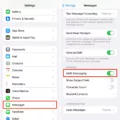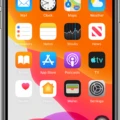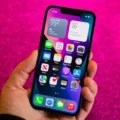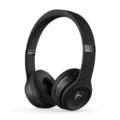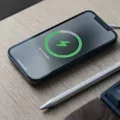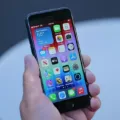The iPhone 8 is a popular smartphone known for its sleek design and powerful features. However, like any other device, it may encounter certain issues that can disrupt its functionality. One common problem that iPhone 8 users may face is the inability to receive calls. This can be frustrating, especially if you rely on your phone for important communication.
There can be several reasons why your iPhone 8 is not receiving calls. Let’s explore some possible solutions to help you resolve this issue and get back to receiving calls seamlessly.
Firstly, it’s essential to check your network coverage. Poor network signal or weak reception can prevent your iPhone from receiving calls. If you are in an area with low signal strength, try moving to a different location or contacting your network provider for assistance.
Another possible reason for not receiving calls on your iPhone 8 is the activation of airplane mode or Do Not Disturb (DND) mode. These settings can block incoming calls and notifications. To check if either of these modes is enabled, swipe up from the bottom of your iPhone screen to open the Control Center. Ensure that both airplane mode and DND mode are turned off.
If you have confirmed that your network coverage and settings are not the issue, it’s worth considering some troubleshooting steps. One effective method is to turn your SIM card on and off. This can help resolve network and SIM card glitches. To do this, go to your iPhone settings and locate the SIM card manager feature. Toggle the switch to turn off the SIM card, wait for a few seconds, and then turn it back on.
Additionally, it’s crucial to check the Ring/Silent switch on your iPhone 8. This switch, located on the side of the phone, can easily be accidentally turned on, causing the device to be in silent mode. Ensure that the switch is toggled towards the back of the phone, indicating that the device is not in silent mode.
Another factor to consider is the condition of your iPhone’s speaker or receiver. If these components are blocked or dirty, it can affect the sound quality and prevent you from hearing incoming calls. Take a moment to inspect the speaker opening and receiver on your iPhone. If necessary, clean them gently with a small, soft-bristled brush. Ensure that the brush is clean and dry before using it.
By following these troubleshooting steps, you should be able to resolve the issue of your iPhone 8 not receiving calls. However, if the problem persists, it may be necessary to contact Apple Support or visit an authorized service center for further assistance.
Remember, technology can sometimes encounter glitches, but with a little patience and troubleshooting, you can often resolve these issues and get your iPhone 8 back to functioning properly.
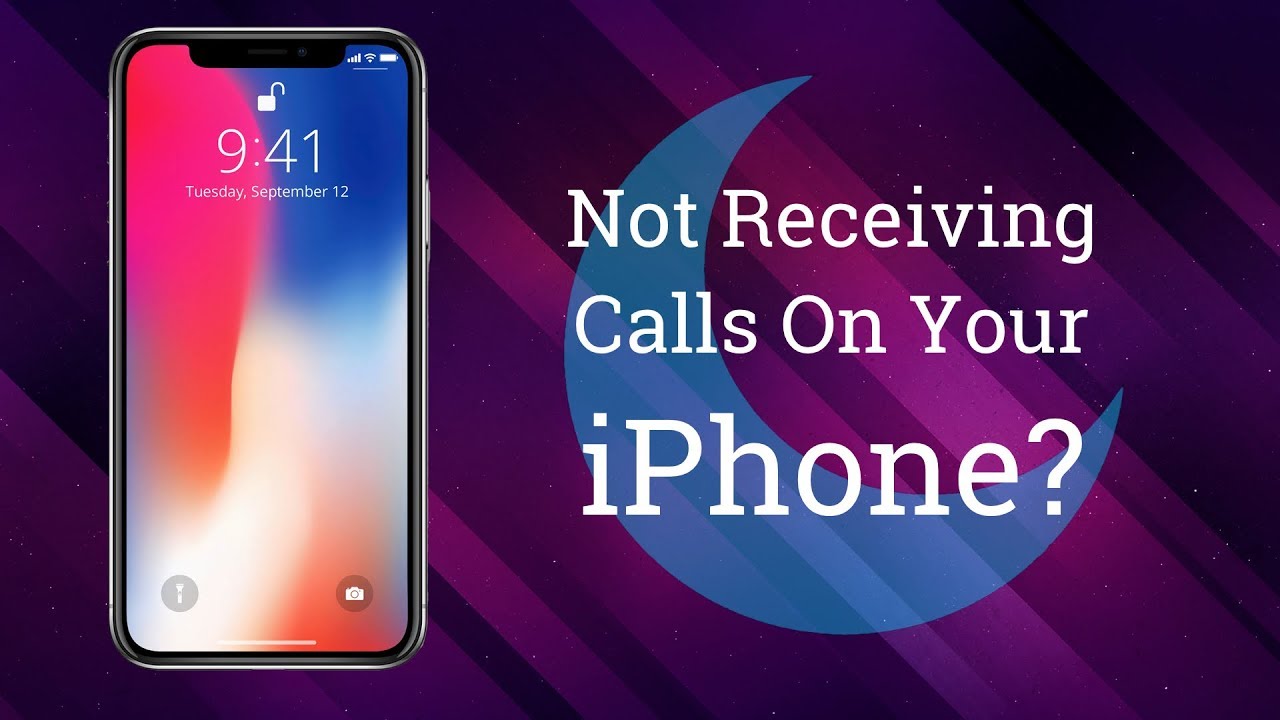
Why Can You Not Receive Calls on Your iPhone?
There could be several reasons why you are not receiving calls on your iPhone. Here are some possible explanations:
1. Airplane Mode: Check if your iPhone is in Airplane Mode. When this mode is enabled, it disables all wireless connections, including cellular calls. You can disable Airplane Mode by swiping up from the bottom of your screen to access the Control Center and tapping on the airplane icon.
2. Do Not Disturb: If you see a moon icon at the top of your screen, it means that Do Not Disturb mode is enabled. This mode silences all incoming calls and notifications. You can disable Do Not Disturb by swiping up from the bottom of your screen to access the Control Center and tapping on the moon icon.
3. Network Issues: Make sure you have a stable cellular network connection. If you are in an area with poor reception or no coverage, it may affect your ability to receive calls. Try moving to a different location or contacting your network provider for assistance.
4. Call Forwarding: Check if call forwarding is enabled on your iPhone. Call forwarding redirects incoming calls to another number or voicemail. To disable call forwarding, go to Settings > Phone > Call Forwarding and toggle it off.
5. Blocked Contacts: It’s possible that the person trying to call you is blocked on your iPhone. To check your blocked contacts, go to Settings > Phone > Blocked Contacts and remove any numbers you don’t want to block.
6. Software Updates: Ensure that your iPhone is running the latest software version. Sometimes, outdated software can cause issues with call reception. Go to Settings > General > Software Update to check for any available updates.
7. Reset Network Settings: If none of the above solutions work, you can try resetting your network settings. This will remove all saved Wi-Fi passwords and other network-related settings. Go to Settings > General > Reset > Reset Network Settings. Note that this will not delete any personal data on your device.
If you have tried all these troubleshooting steps and still cannot receive calls on your iPhone, it may be a hardware issue. In that case, it is recommended to contact Apple Support or visit an authorized service center for further assistance.
Why Won’t Your Phone Accept Incoming Calls?
There could be several reasons why your Android phone is not accepting incoming calls. Here are some possible explanations:
1. Poor network coverage: If you are in an area with weak or no network signal, your phone may not be able to receive calls. Check your signal strength indicator and try moving to a different location to see if the issue persists.
2. Airplane mode enabled: If you have accidentally turned on airplane mode, it will disable all wireless connections, including incoming calls. To check if this is the case, swipe down from the top of your screen to access the quick settings panel and look for the airplane mode icon. If it is highlighted, tap on it to turn it off.
3. Do Not Disturb (DND) mode activated: DND mode silences your phone and blocks incoming calls. It is useful when you don’t want to be disturbed, but it can also prevent you from receiving calls unintentionally. To disable DND mode, go to your phone settings and look for the “Do Not Disturb” or “Sound & notification” section. Make sure it is turned off.
4. SIM card issues: Sometimes, network and SIM card glitches can prevent your phone from accepting incoming calls. You can try turning off your phone, removing the SIM card, and reinserting it after a few seconds. This can help resolve any temporary connectivity issues.
Why is Your iPhone Not Ringing When Someone Calls You?
There can be several reasons why your iPhone is not ringing when someone calls you. Here are some possible explanations:
1. Ring/Silent switch turned on: The most common reason for your iPhone not ringing is that the Ring/Silent switch, located on the side of the device, is turned on. When the switch is set to silent mode, your iPhone will not ring or make any sound. To fix this, simply switch the Ring/Silent switch to the “Ring” position.
2. Do Not Disturb mode enabled: If your iPhone is in Do Not Disturb mode, it will not ring when someone calls you. This mode is designed to silence all incoming calls and notifications. To check if Do Not Disturb is enabled, open the Control Center by swiping down from the top-right corner of the screen (or up from the bottom on older iPhone models) and look for the crescent moon icon. If it is highlighted or activated, tap on it to turn off Do Not Disturb mode.
3. Volume settings: It’s possible that the volume settings on your iPhone are turned down or muted. To adjust the volume, press the volume up button on the side of the device or go to Settings > Sounds & Haptics (or Sounds) and adjust the volume slider.
4. Airplane mode activated: If your iPhone is in Airplane mode, it will not receive any calls or notifications. Airplane mode disables all wireless connections, including cellular, Wi-Fi, and Bluetooth. To turn off Airplane mode, open the Control Center and tap on the airplane icon, or go to Settings and toggle off Airplane Mode.
5. Call forwarding enabled: If you have set up call forwarding on your iPhone, incoming calls may be redirected to another number, such as a voicemail or another phone. To check call forwarding settings, go to Settings > Phone > Call Forwarding and make sure it is turned off.
6. Software issues: Occasionally, software glitches or bugs may cause your iPhone to not ring. In such cases, restarting your device or updating to the latest iOS version may help resolve the issue. To restart your iPhone, press and hold the power button until the slider appears, then slide to power off. After a few seconds, press and hold the power button again until the Apple logo appears.
If none of these solutions work, it is recommended to contact Apple Support or visit an authorized Apple service center for further assistance.
Why Can’t You Hear Callers on Your iPhone 8?
There are several possible reasons why you might not be able to hear callers on your iPhone 8. One common cause is a blocked or dirty speaker opening. The speaker opening is where the sound comes out of the phone when you’re on a call. Over time, dust, dirt, or other debris can accumulate in this opening, blocking the sound and making it difficult to hear the person on the other end of the line.
To check if the speaker opening is blocked or dirty, you can visually inspect it. Look for any visible debris or obstructions in the speaker area. If you see anything that could be blocking the sound, you can try cleaning it using a small, soft-bristled brush. Make sure the brush is clean and dry before using it. Gently brush away any dirt or debris from the speaker opening.
It’s worth noting that on an iPhone, there is also a receiver opening located at the top of the device. This is the area where you place your ear when making a phone call. If this receiver opening is blocked or dirty, it can also affect the sound quality during calls. To clean the receiver opening, you can use the same method as described above, using a small, soft-bristled brush to gently remove any dirt or debris.
If you are unable to hear callers on your iPhone 8, it could be due to a blocked or dirty speaker opening or receiver opening. You can visually inspect these areas and clean them using a small, soft-bristled brush if necessary.






